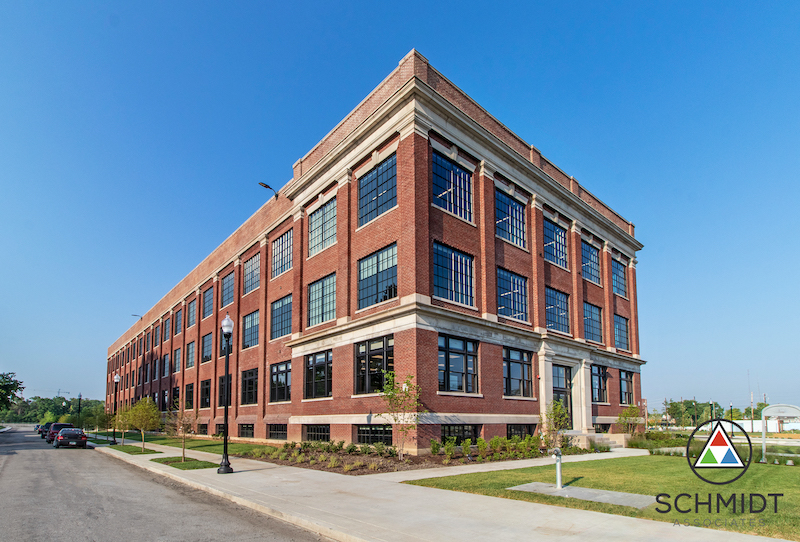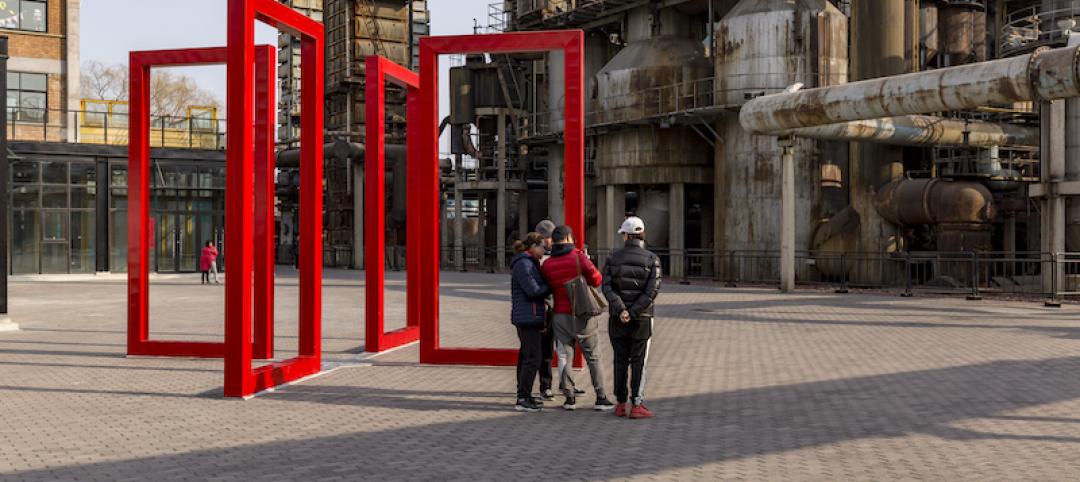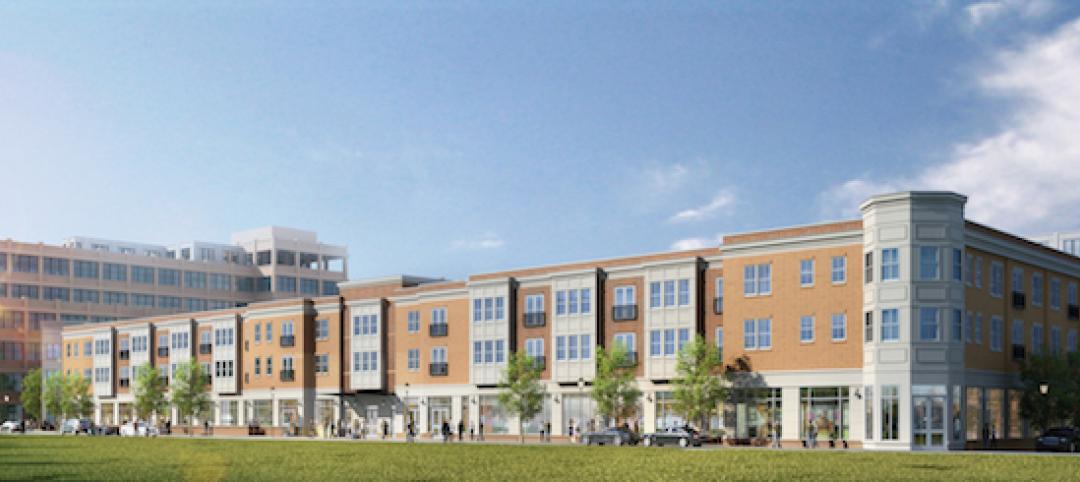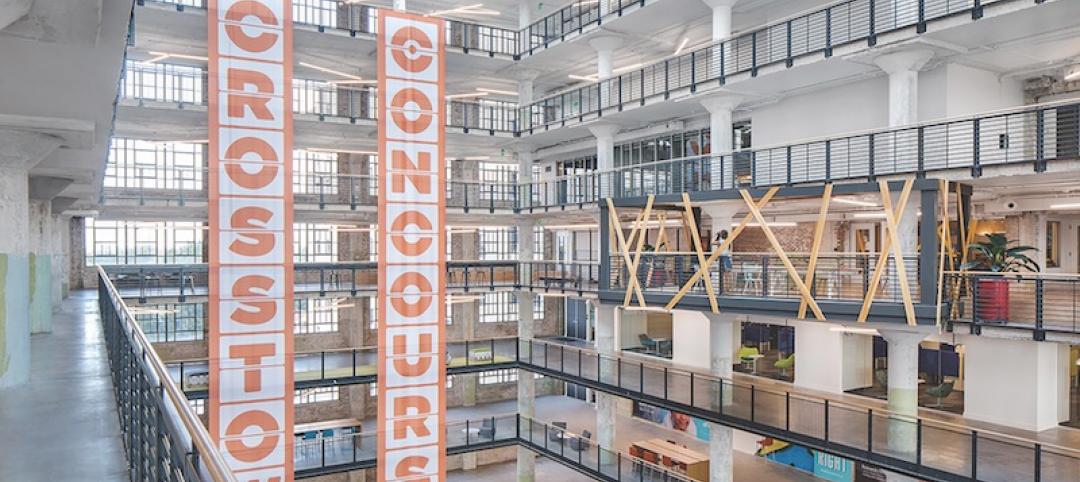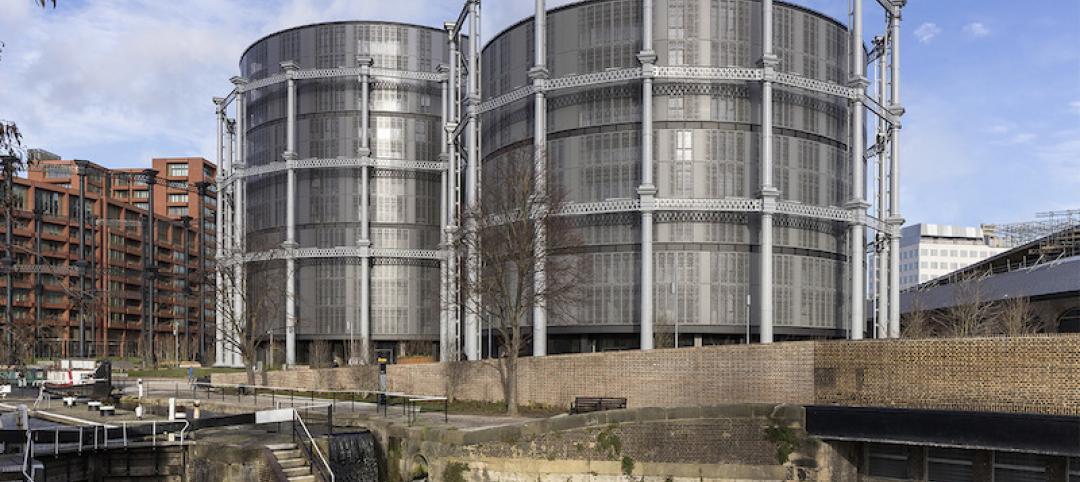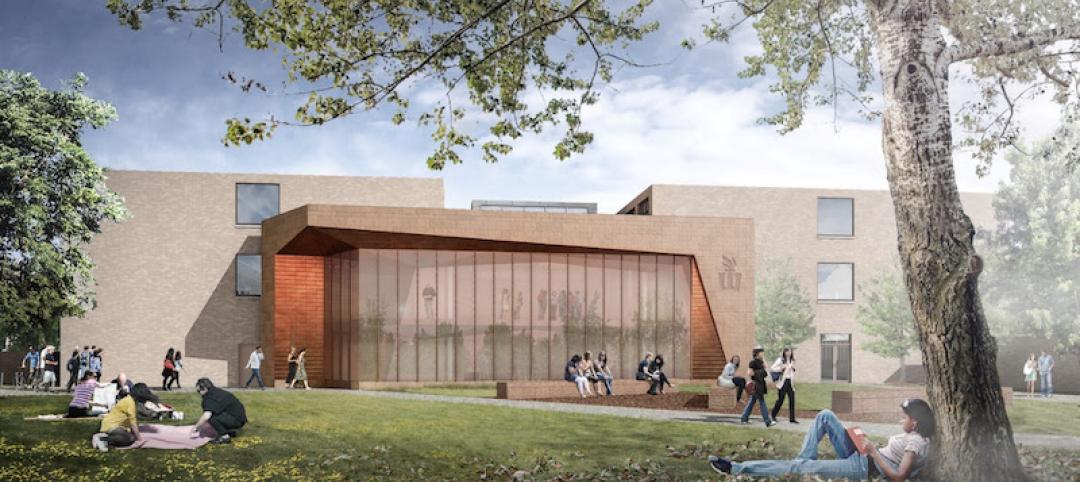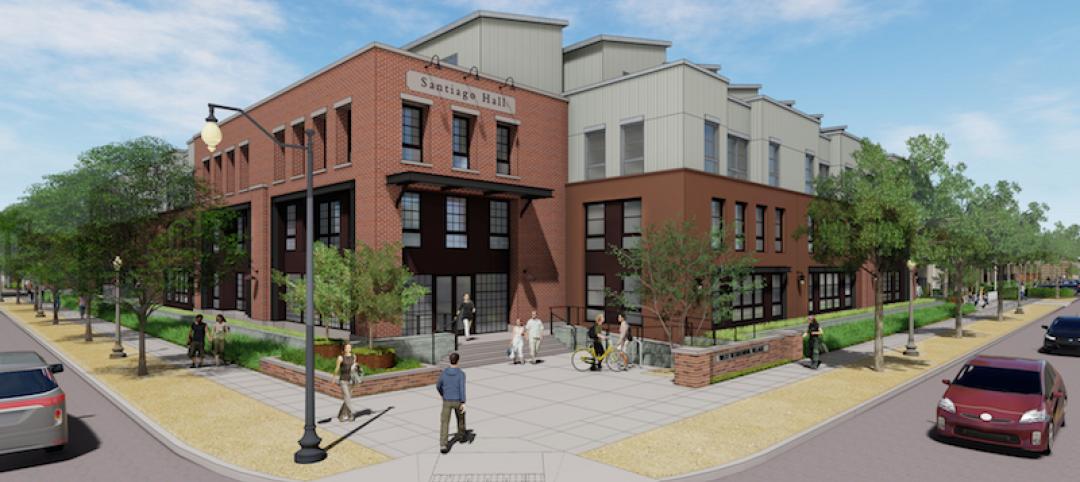The P.R. Mallory Building in Indianapolis was once where the Duracell battery was invented and patented. Vacant for decades, the 100-year-old building has been jolted back to life through an adaptive reuse project that converted the facility into new homes for the STEM-focused public charter school Purdue Polytechnic High School and Paramount Englewood Middle School.
The building team—AE firm Schmidt Associates, Brandt Construction, and landscape designer Anderson + Bohlander—was instrumental in helping Englewood Community Development and John Boner Neighborhood Centers, the building’s owners since 2018, to realize their vision.
“We were able to help the owners take something old and dilapidated, and turn it into something new and innovative that will improve lives long into the future,” says Lisa Gomperts, FAIA, LEED AP, Principal and Project Manager with Schmidt Associates.
REUSE DESIGN COMPLICATED BY NATIONAL REGISTRY

A before-and-after look at one of the building's areas. Large floor plates gave the design team lots of room for their ideas.
Adaptive reuse and historic preservation are among Schmidt’s specialties. For example, last year the firm converted an abandoned 62,000-sf strip mall in Shelbyville, Ind., into Golden Bear Preschool, a $13 million project that encompasses a SENSES gym for children with special needs, 15 classrooms, a cafeteria, and outdoor play area. The school’s administrative office is located inside what had been a bank at the end of the shopping center.
The Indianapolis schools, which opened last week, are contained within 114,256 sf over four floors. The project’s total cost was $38 million, of which $23.4 million was construction.
Click here to see an architectural tour of the building
The adaptive reuse presented some challenges. During the design phase, the owners initiated the process of putting the building on the National Register of Historic Places, which meant that any proposed designs needed approval from the National Parks Service, the Indiana Department of Natural Resources, and the city.
It took 23 months to get the building’s 206 historically accurate windows approved. The building itself also had an undocumented tunnel system that had to be filled in. And because that had once been a battery plant, environmental remediation was a given to make the space safe for students and faculty.
The building’s original wood columns and ceilings were stripped and restored, and other original elements were retained such as a catwalk and roof monitors, steel doors of the elevator and vaults, and the factory’s smokestack for future renovation. The original terrazzo tile that adorned the building’s north entryway was restored.
Also see: Hastings Architecture creates its new HQ from a former Nashville public library building
ARCHITECT HAD LOTS OF SPACE TO WORK WITH
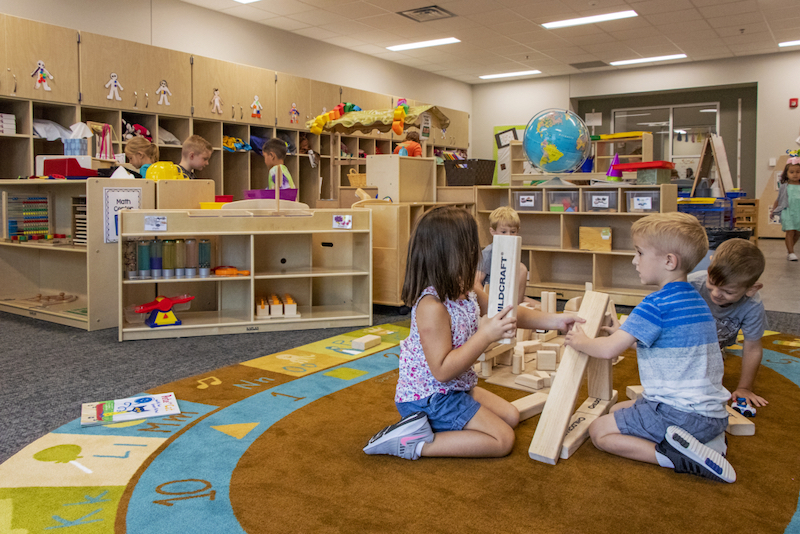
Another of Schmidt Associates' adaptive reuse projects is Golden Bear Preschool, inside what once was a shopping mall in Shelbyville, Ind.
The nontraditional curricula of the educational tenants, and their relationship, drove the reuse design. The two institutions will be integrated with each other and Purdue University; for example, a middle-school student would receive priority admittance to Purdue Polytechnic, whose students receive direct admittance upon graduation to Purdue University.
The building has 56 classrooms: 31 for the high school including labs and a career readiness center; and 25 for the middle school.
The building’s expansive floor plates gave Schmidt an ample canvas for its design ideas. The building now features collaborative study lounges whose furniture can be broken down into pods; clean and dirty maker spaces; flexible classrooms with garage doors that open up or section off spaces as needed; and communal outdoor gathering areas. There is also a high level of technological integration between the schools.
Related Stories
Adaptive Reuse | May 7, 2018
A decade after it debuted, Beijing’s 798 Arts District is still a work in progress
China’s third-most-popular tourist attraction remains a magnet for creative tenants.
Adaptive Reuse | Apr 26, 2018
Edison Lofts building is New Jersey’s largest non-waterfront adaptive reuse project
Minno & Wasko Architects & Planners designed the building.
Adaptive Reuse | Mar 8, 2018
LEED Platinum for Memphis industrial reuse project
Memphis-based engineering firm OGCB and contractor Grinder Tabor Grinder led the removal of 54 million lb of concrete and 10 million lb of metal.
Multifamily Housing | Feb 27, 2018
Victorian era gasholders become modern residences in London
The new residences are part of the King’s Cross redevelopment scheme.
Education Facilities | Jan 8, 2018
Three former school buildings are repurposed to create mini-campus for teacher education
The $25.3 million project is currently under construction on the Winona State University campus.
Adaptive Reuse | Jan 4, 2018
Student housing development on Chapman University campus includes adaptive reuse of 1918 packing house
The Packing House was originally built for the Santiago Orange Growers Association.
Adaptive Reuse | Dec 11, 2017
Detroit's economic improvement a boon to its hotel sector
Detroit Foundation, a stylish boutique hotel, is the Motor City’s newest hospitality venue.
Adaptive Reuse | Nov 29, 2017
‘Eat-ertainment’ establishment grants abandoned air traffic control building a second life
The concept’s design reflects the golden age of flight.
Adaptive Reuse | Nov 10, 2017
Austin’s first indoor shopping mall becomes Austin Community College’s new digital media center
Renovation of the defunct mall represents Phase 2 of ACC’s $100 million adaptive reuse project.
Adaptive Reuse | Oct 23, 2017
A tableware storage space is reset to accommodate an investment firm’s headquarters in Raleigh, N.C.
This adaptive reuse establishes more direct visual and physical connections to a growing city.


